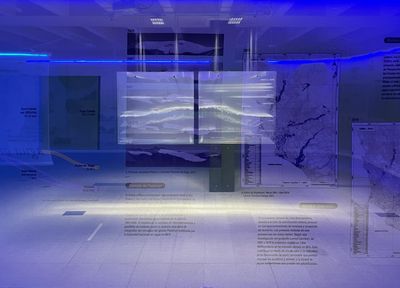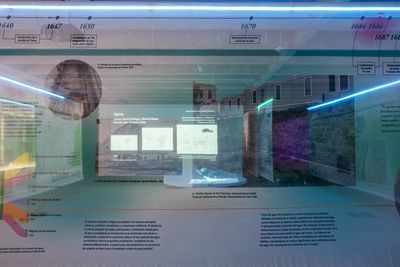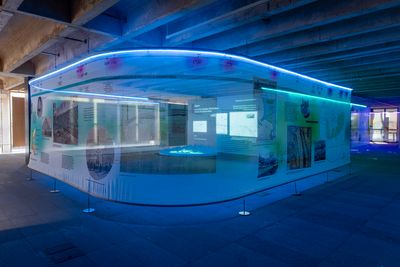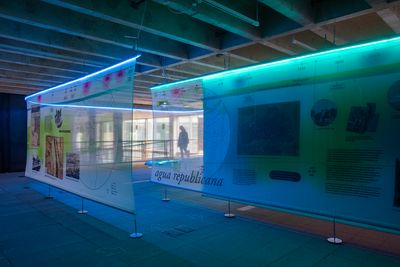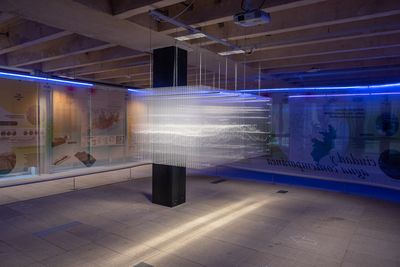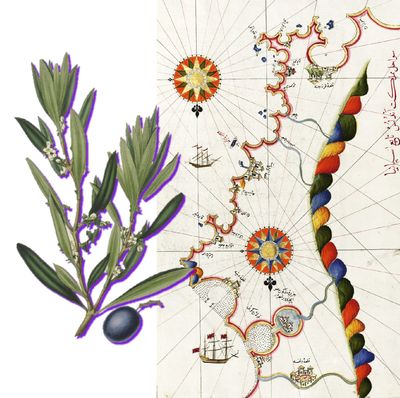Colegio Oficial de Arquitectos de Madrid, Madrid, Spain
Lima Húmeda: Paisajes Metropolitanos a Través de Los Ciclos, Espacios Y Habitantes Del Agua
The research and exhibition showcase the history of urbanisation in the Peruvian capital through the foundational element for life on our planet: water. Lima derives its name from the Quechua word rimaq, meaning “talking river.” Its earliest human settlements emerged thanks to an intelligent management of water resources, modified through human technologies to create complex landscapes that integrated agriculture and urbanisation. However, today, the city faces the socioecological challenges of the climate crisis, with increasingly arid metropolitan landscapes and a growing population exceeding ten million inhabitants.
The exhibition proposes a rethinking of the city’s complex relationship between culture and nature: from its extensive network of pre-Hispanic canals, the arrival of colonial Romano-Islamic technologies, the expansion of gray infrastructure resulting from modernity, the intensive occupation of its three metropolitan valleys, to the opportunities and challenges that both neighborhood initiatives and large-scale infrastructure megaprojects will bring to the city. Rather than adhering to a strict chronological order, the overlap and superimposition of these stages invite an exploration of connections and continuities across the various spatial and temporal scales of Lima’s history.
